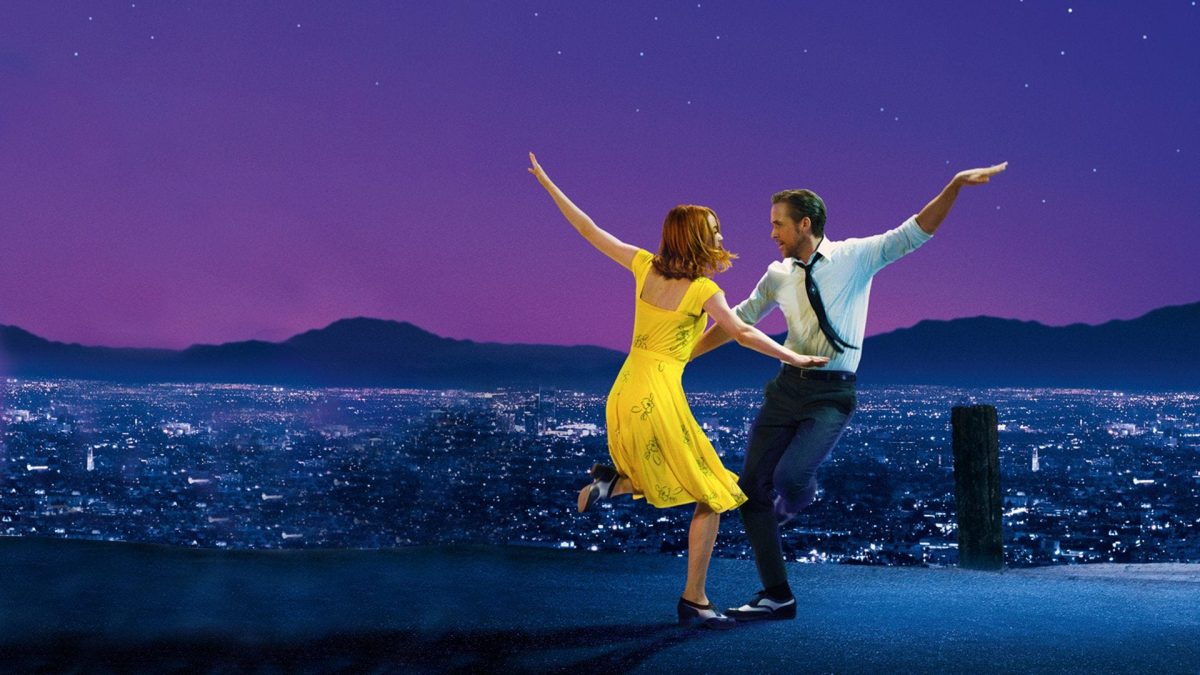Enveloped in emblematic hues of amber, scarlet, and magenta, characterized by sounds of tap-dancing, Los Angeles rush hour traffic, and the buzz of ambition, La La Land isn’t merely known for being just a movie; to many, it’s an ode to dreams and a testament to the timeless charm of cinema. Having received 33 major nominations in 2017 and miraculously winning 18 of those awards, director Damien Chazelle, director of Whiplash (2014), garners well-deserved acclaim due to his meticulous craftsmanship and emotional storytelling. Polishing the homage to Hollywood fantasies and love’s bittersweet nature are actors Emma Stone playing Mia, an aspiring actress, and Ryan Gosling playing Sebastian, a pianist waiting for his break into the jazz club industry. Composer Justin Hurwitz joins longtime partner director Damien Chazelle in scoring the film, seamlessly integrating with the narrative and enhancing the film’s emotional depth; Hurwitz’s scores are not only lyrically profound but rhythmically catchy. Songs such as “The City of Stars” and “Mia and Sebastian’s Theme” aid in the timeless, iconic grip on movie enthusiasts, film fans, and casual audience members.
A multitude of factors has propelled La La Land’s immense success. La La Land nods to earlier motion picture musicals while balancing creative invention and adoration; novelty and nostalgia join forces to enthrall audience members. The relatable nature of the main characters, Mia and Sebastian, further harnesses the reminiscence of early movie musicals to contrast against the superhero-like main characters of today’s box-office dominant action films. Both actors bring such depth and vulnerability to their roles; their chemistry is palpable. However, Chazelle utilized the first act to develop the individual characters and allow the audience to connect with each character; his meticulous attention to the unique intricacies of each character before they become intertwined exhibits Chazelles astonishing craftsmanship.
From a technical standpoint, cinematographers commend Chazelle’s one-take scenes, camera angles, depth of field, and vibrant colors to fully immerse the audience in the rollercoaster of emotion and feeling. Furthermore, a small incorporation truly transformed various scenes: a lens flare. From ordinary and commonplace to the outlook of a Los Angeles perspective, every lens flare throughout the film had been intentional. Color is heavily incorporated to fully express emotion; for instance, our first look at Sebastian’s apartment is one of mundanity and dullness, conveying his musical and prospective stump. However, when he begins to play the piano, a colorful lens flare appears to carry the illusion of emotional magic. “Color was the first thing I noticed,” Yafu Yu (10) recalls, “I remember feeling each emotion that is associated with each color, such as red being symbolic of love or anger.”
From Mia’s iconic yellow dress to La La Land’s bittersweet ending, this critically acclaimed classic will forever be remembered as the ideal movie musical.




























